AN ANCIENT HANDBOOK TO DISCOVER GOD AND YOUR
Patanjali-Yoga Sutra:
Aforismele Yoga ale lui Patanjali
Instructiuni pentru Centrare in Axul,Izvorul si Banca de Date a Universului fenomenal ;Regulile practice ale antrenamentului antic de aliniere (Yoga) care conduc la cunoasterea experimentala a Sinelui(Centrului;Temeliei),la autocontrol,la vindecare,acces la puterile divine
si la Eliberare din starea actuala de ratacire,de ignoranta,
neputinta si suferinta.
UN SITE DESPRE YOGA SUTRA(REGULI DE CENTRARE/INSTRUCTIUNI DE ALINIERE);AFFORISMELE YOGA ALE LUI PATANJALI IN TRADUCEREA SI INTERPRETAREA LUI DAN MIRAHORIAN SI DHIRENDRA BRAHMACHARI;UN SITE DESPRE STIINTA SI TEHNOLOGIA TRANSEI CENTRIPETE SI DESPRE APLICATIILE SALE(TREZIREA;DESCOPERIREA LUI DUMNEZEU SI A ADEVARATEI NOASTRE IDENTITATI,RELAXAREA PILOTATA PT. CENTRAREA IN BANCA DE DATE A UNIVERSULUI)
http://patanjaliyoga.spaces.live.com/
YOGA SUTRA-Aforismele Yoga ale lui Patanjali (Instructiuni pentru Centrare) Traducere din l.sanskrita,dictionar sanskrit-roman-englez al tuturor termenilor din Yoga Sutra,inregistrare audio pe CD in lb.sanskrita si romana a celor 196 de aforisme, note si comentarii de:Swami Dhirendra Brahmachari si Dan Mirahorian Copyright @2004,2005,2006 Dan Mirahorian All Rights Reserved Standard ISBN 0 00433160-5 Indexed ISBN 0 00433161-3
PSI SCIENCES:
Patanjali-Yoga Sutra:
Cuvant inainte/Foreword
Multumesc si pe aceasta cale tuturor acelora care au contribuit la aparitia acestei lucrari.Lucrarea de fata a beneficiat de experienta unor traducatori practicanti ai Yoga(Sergiu Al-George,care mi-a calauzit primii pasi in lb.sanskrita si a tradus textele fundamentale ale Samkhya Darshana,care stau la baza sistemului de reintegrare expus de Patanjali in Yoga Sutra; Gerard Blitz- fostul presedinte al Federatiei Europene de Yoga- prin corespondenta legata de traducerea Yoga Sutra,ce mi-a fost pusa la dispozitie de prietenul meu,cercetatorul roman Romulus Cheveresan ), a unor experti in interpretarea stiintei si tehnologiei transei (Mircea Eliade,I.Culianu),a unor experti profesionisti in Yoga (Swami Dhirendra Brahmachari,conducatorul Mantalaya Ashram din Kashmir si fostul consilier al premierului Indiei,d-na Indhira Gandhi) si a unor experti simbolici(Henri Coanda mi-a atras atentia ca in Yoga Sutra este consemnata calea catre cunoasterea si tehnologia civilizatiei precedente de pe Terra si a civilizatiilor avansate din univers).
Yoga Sutra(Instructiuni pentru Centrare) este cartea in care Patanjali (sec.VI-II i.e.n) a consemnat traditia mult mai veche de reamintire a adevaratei noastre identitati, o traditie prin care reprezentantii civilizatiilor care ne-au precedat pe Terra aveau acces la Banca de Date a Universului si la capacitati divine(siddhis, vibhuti) care depasesc cu mult realizarile tehnologice ale civilizatiei prezente. Textul lui Patanjali vorbeste despre functionarea holografica a creierului in care se abandoneaza dualitatea subiect-obiect,despre scaderea agitatiei pt.intrarea in starea de supraconductie a cristalului biologic(YS 1.41),despre levitatie,teleportare,invizibilitate, despre telecomunicatii biologice,despre scutul defensiv si despre multe alte. In fata acestor capacitati accesibile omului care a realizat centrarea si alinierea actualul nivel atins de stiinta si tehnologia de pe Terra este primitiv.Traditiile,legendele si povestile(traditii care au imbracat aceasta haina pt. a trece de cenzura instituita de fundamendalismul religios) de pe tot globul au consemnat capacitatile divine de cunoastere si de control a realitatii manifestate si le-au atribuit eroilor,zmeilor,zeilor,oamenilor treziti(sfintilor) si reprezentantilor unor civilizatii galactice avansate . Yoga Sutra(Aforismele Yoga) ale lui Patanjali este o carte ce cuprinde 196 de sutra(lit.:perle,reguli; instructiuni concise;aforisme),repartizate in patru Pada(lit.:picior,podium, baza, platforma,parte):
Acknowledgements
This book could not exist without the continued generous support from the community. I would like to take this opportunity to thank some exceptional project contributors.I want to express by this way my gratitude to those which has made this work possible The present work is the beneficiary of the experience of translators who has practiced Yoga . I would like to thank Mr.Sergiu Al-George,who was the guide of my first steps in sanskrit language and who is known for the romanian translations of the basic texts of Samkhya Darshana,which is the philosophical foundation-stone of the reintegration system exposed by Patanjali in Yoga Sutra; I would like to thank also Mr. Gerard Blitz- the former President of European Yoga Federation - for his help sent by post in the translation of Yoga Sutra,a correspondence which was handed to me by my friend,the romanian researcher Romulus Cheveresan ), to the famous romanian experts in the interpretation of the science and technology of trance in different cultures (Mircea Eliade,I.Culianu),to the professional expert in Yoga (Swami Dhirendra Brahmachari,the former leader of Mantalaya Ashram in Kashmir and the former counsellor of India's Prime Minister ,Indhira Gandhi) and especially to the symbolic expert (Henri Coanda,who directed my attention to the fact that Yoga Sutra is the book in which is delivered/ consigned the way to the science and technology of former civilizations here on Earth and of other highly advanced civilizations in the univers).
Premierement, je veux vous remercier, tous et toutes, qui se sont mobilises pour contribuer d'une maniere ou d'une autre a la realisation de la presente ouvrage.L'ouvrage ici presente a beneficie de la large contribution des experts dans plusieurs domains de competence.J'exprime ici ma gratitude a Sergiu Al-George,le traducteur roumain des texts fondamentaux de Samkhya Darshana,qui a guide aussi mes premiers pas dans la langue sanskrite. J'exprime aussi ma gratitude a Gerard Blitz- l’ancien President de la Federation Europeen de Yoga -pour sa traduction de Yoga Sutra,recu par correspondence par mon ami,le chercheur romain Romulus Cheveresan); Je tien a remercier aussi a deux celebre experts romains dans interpretation de la science et la technologie de la trance dans les divers cultures (Mircea Eliade,I.Culianu),et aussi a expert professionnel dans le Yoga (Swami Dhirendra Brahmachari,ancien president de Mantalaya Ashram in Kashmir et counseiller du Premier Ministre de l'Inde:Indhira Gandhi).Je tiens tout d’abord a remercier en premier lieu a l' expert symbolique (Henri Coanda, qui avait une contribution essentiale dans la directive de chercher sur le fait que Yoga Sutra est consideree le livre dans lequel est consignee la voie d'aquerir la connaissance et la technologie des anciens civilisations de la Terre et aussi d'autres civilisations avancee de l'univers).
Les Yoga Sutras(Les Instructions de Patanjali pour l'Alignement ou Les regles de Patanjali pour le Centrage),c’est a dire : Les aphorismes Yoga de Patanjali est un livre (remontant aux VIe-IIe siecles avant notre ere) dans lequel l’auteur a reussi a nous transmettre une tradition plus ancienne sur la rememoration de notre vrai identite, une tradition dans lequel est indique la voie de l' alignement utilisee par nos ancetres et par les civilizations qui nous ont precede ici sur la Terre,pour obtenir l'access a la Banque des Dates ou des Information de l' Universe et a les pouvoirs divine (siddhis),a un niveau qui depasse de lointain le niveau present des realisations obtenue par la science et la technologie actuel. Le livre de Patanjali parles sur le functionement holographic de notre mental,sur l'etat de superconductibilite biologique du cristal mental - obtenu par la reduction de la temperature et de l' agitation de l'esprit,sur la levitation biologique, sur la teleportation (le transfer de la matiere a travers l'universe d'une point a l'autre),sur l'invisibilite,sur les telecommunications biologique, sur l'invulnerability,sur le champs defensive et beaucoup d'autres capacites.Notre actuel superiorite sustenu par les realisations de la science et la technologie sont sans voix en face des ces pouvoirs magique qui sont accesible a chacun des hommes qui peux realiser l'etat dl'union,de l'alignement or de centrage dans la source de l'universe manifeste. Sur tous les meridiens de la Terre il existe encore maintenant des legendes,des traditions et des recits pour les enfants dans lequelles nous rencontrons des heros,des saints,des dieux et des etres tres avancee de la galaxie qui sont tous des possesseurs des pouvoirs divines de la connaissance et de l'action directe sur la realite manifeste. A memoriser le fait que les recits folklorique etait une voie utilisee par les anciens traditions pour eviter ou by-passer la censure et le fondamentalism des les nouveaux religions institutionalisees. Les Les Yoga Sutras(Les Instruction pour l'Alignement ou pour le Centrage) contient 196 sutra(perles,regles,instructions,aphorisms) qui sont divises en 4 chapitres ou pada:


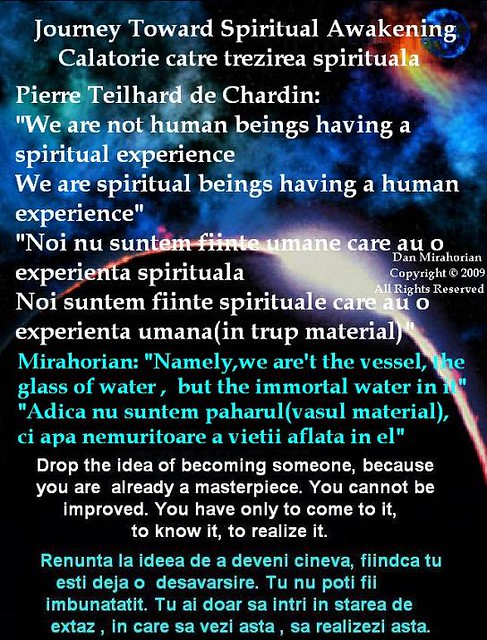
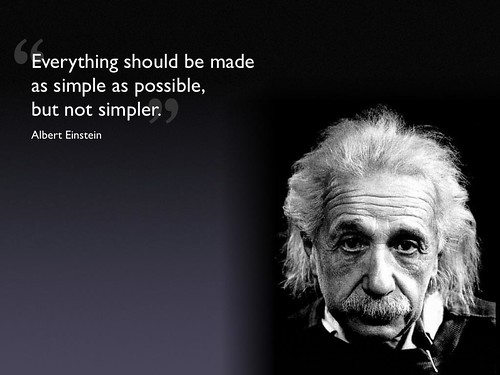
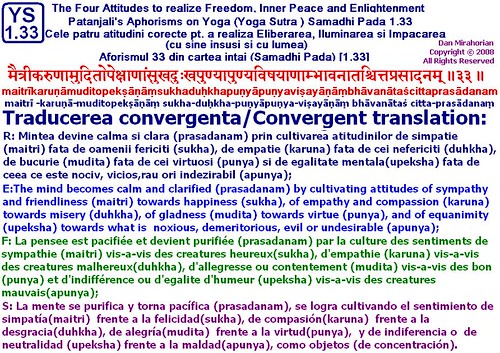
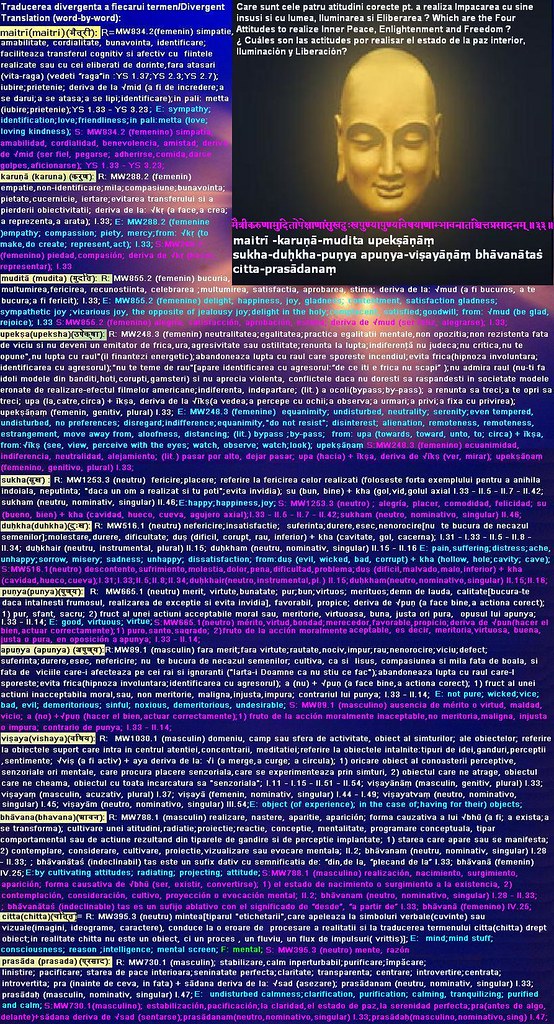

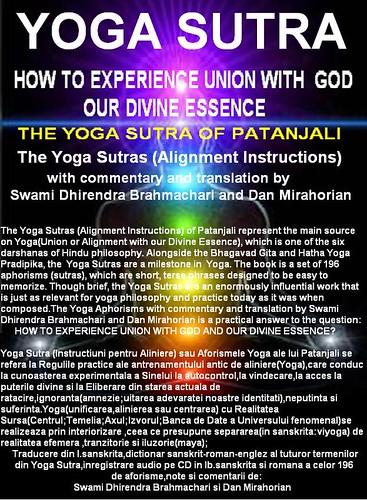
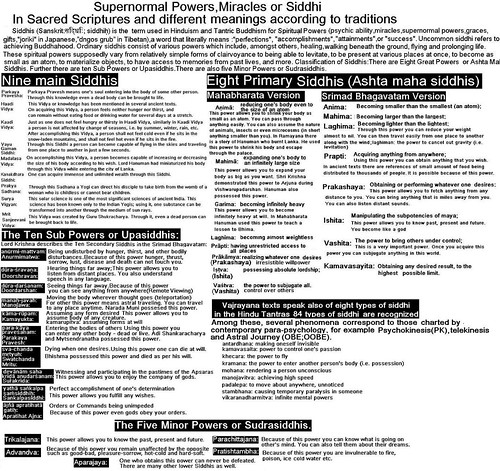


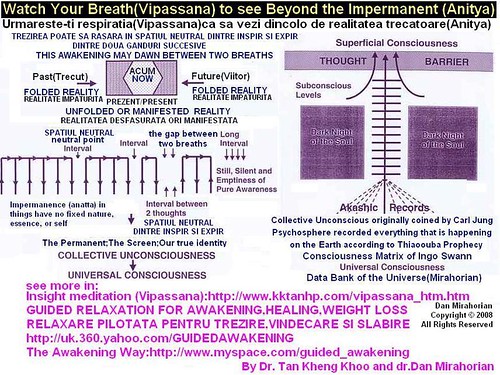

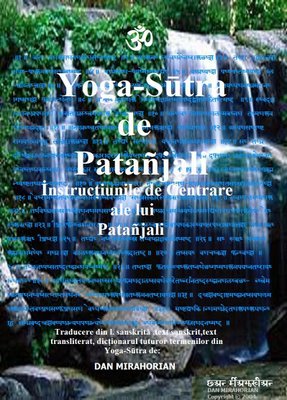

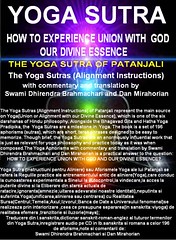





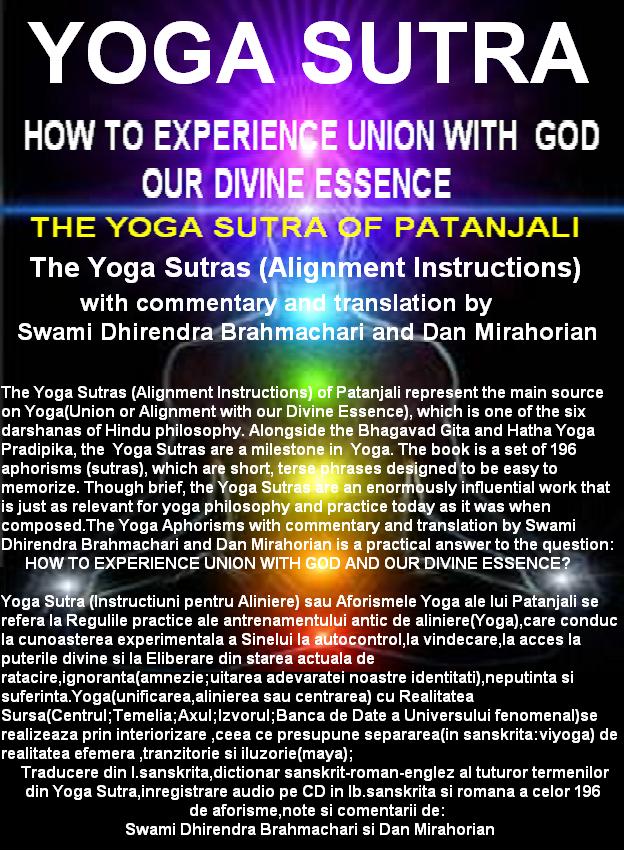





No comments:
Post a Comment